FRIEND OR FOE?
Understanding conflict networks in North and West Africa
Munich Security Conference 2024

Violence in West Africa has reached a record high, while in North Africa it is at a 20-year low. Many actors are involved, including state forces, rebel groups and extremist organisations. Their relationships are complex and remain poorly understood. At this year’s Munich Security Conference, the Sahel and West Africa Club (SWAC/OECD), hosted a roundtable discussion on the relationships between actors in conflict in North and West Africa. The discussion also focused on the spread of conflict within and across national borders, reaching coastal states along the Gulf of Guinea.
The roundtable discussion was composed of several esteemed guests. Joining moderator Marie Trémolières, (SWAC/OECD) was Steve Radil, US Air-Force Academy; Stella Voutta, Program Director, Peace and Global Issues, Robert Bosch Stiftung; Dr Lori-Anne Théroux-Benoni, Regional Director, Institute for Security Studies; Mahamoudou Savadogo, Managing Director, Granada Consulting; and Binta Sidibé-Gascon, President of the KISAL Observatory.
Marie Trémolières provided an overview of some key regional trends, drawing on
SWAC/OECD reports and interactive mapping tools available to help better understand how
conflict is spreading within and across borders in North and West Africa.

THREE REGIONAL TRENDS
1. Violence has reached a record high in West Africa
The number of violent events and victims is constantly rising in West Africa. In contrast, violence in North Africa is at a 20-year low. Since 2000, there has been an explosion in attacks against unarmed civilians. In 2022, over 8000 civilians were killed in North and West Africa according to ACLED; most were in five countries: Nigeria, Burkina Faso, Mali, Cameroon, and Niger.
2. Major hotspots of violence
Nigeria is the main epicentre of violence. ln the Central Sahel, community conflicts, coup d'état and terrorist violence are all overlapping. Tensions in Mali are spreading southwards and violence subsumes nearly all the borderlands along the Mali-Burkina Faso-Niger border.
3. Violence is spreading to coastal states
SWAC/OECD’s Spatial Conflict Dynamics indicator (SCDi) shows that violence is spreading to coastal states. In 2022-23, 11% of all areas newly experiencing conflict were in Benin, Côte d’Ivoire, Ghana, Guinea, and Togo.
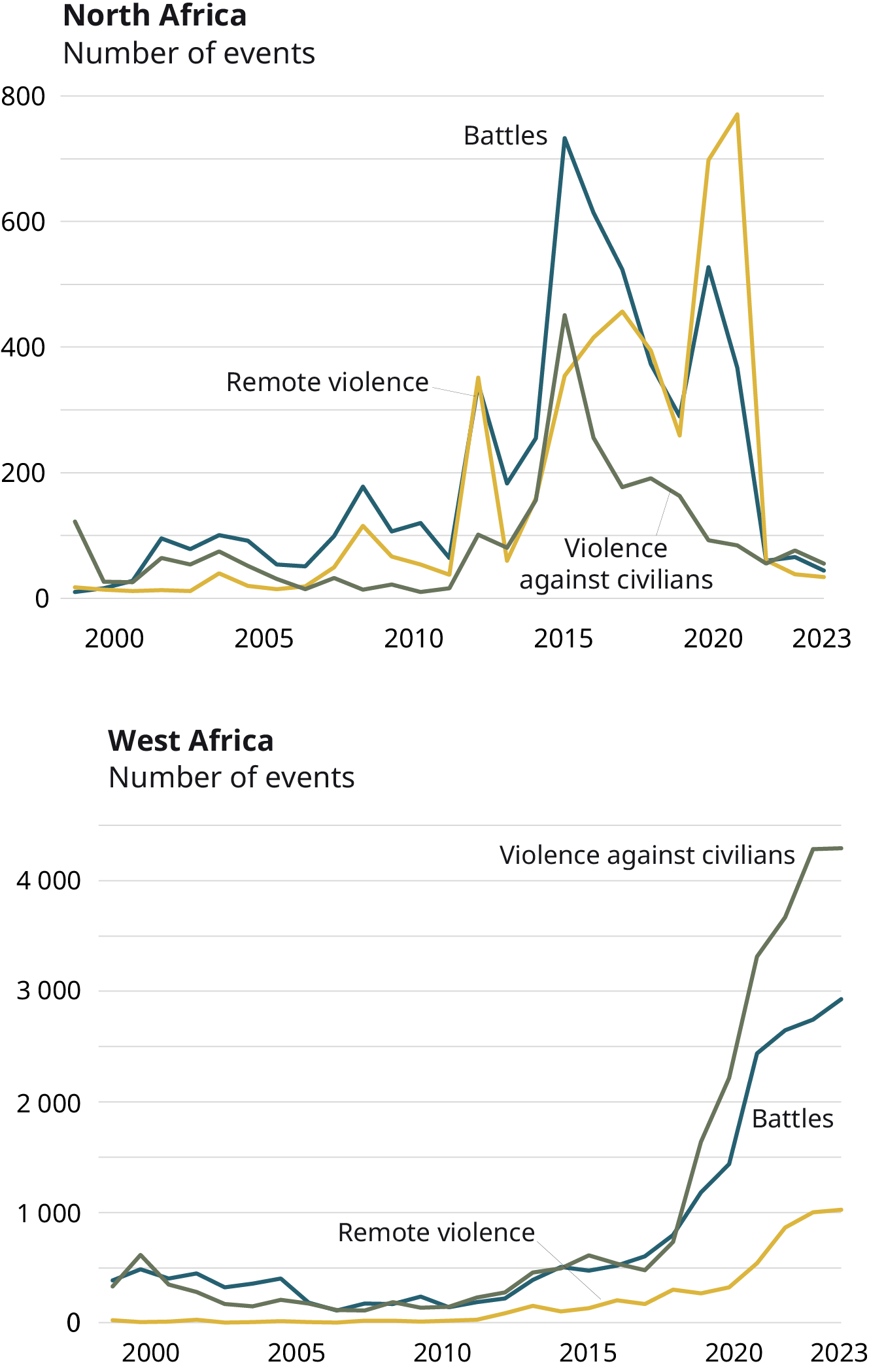
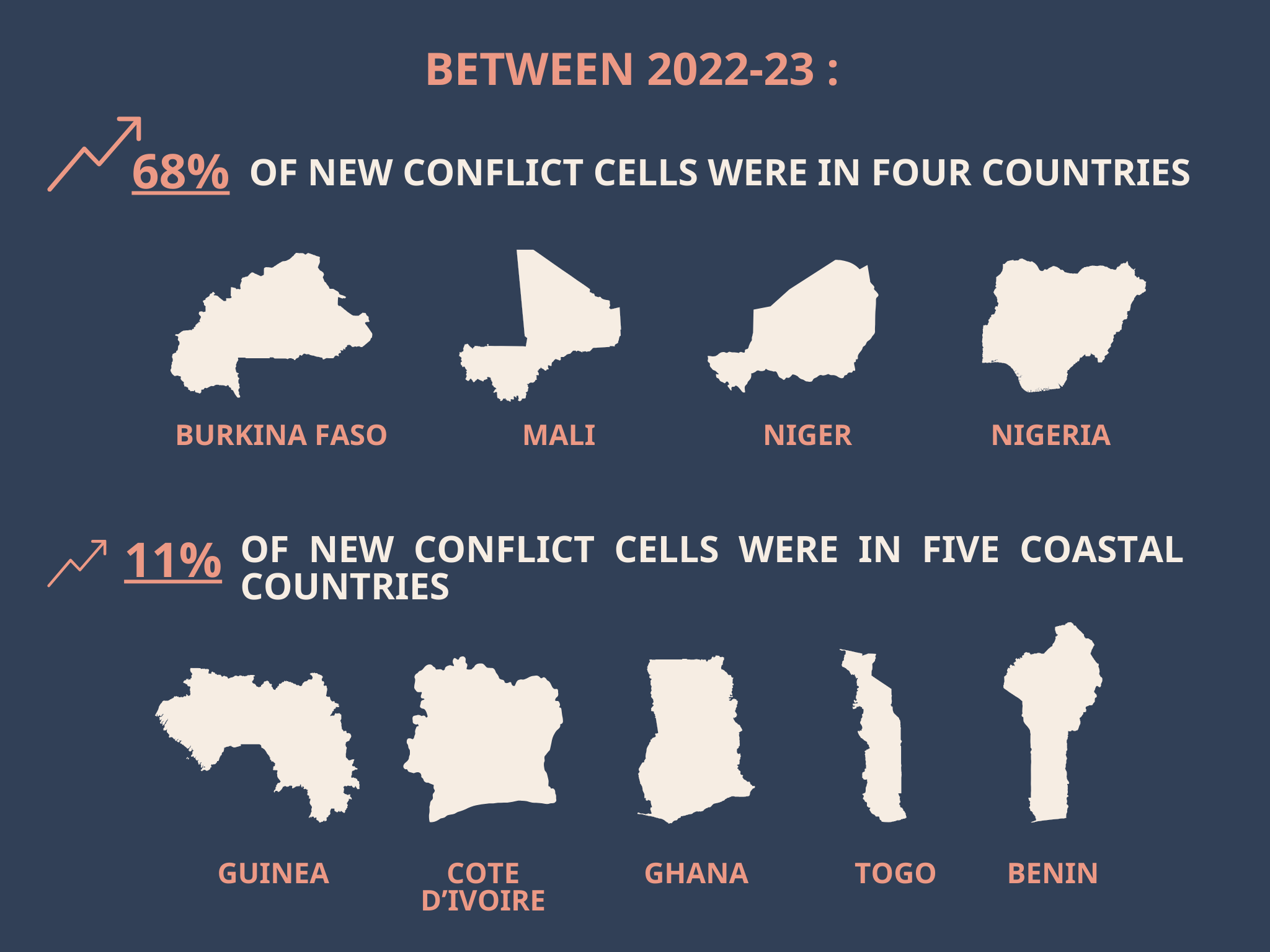
Steve Radil provided a deep dive into the key findings of the SWAC/OECD’s report on the fragmentation of conflict networks in North and West Africa, co-published with Olivier Walther from the University of Florida. The paper showcases an innovative approach, namely Dynamic Social Network Analysis, to help better understand the relationships between actors in conflict in the region.

CONFLICT NETWORKS: THREE KEY MESSAGES
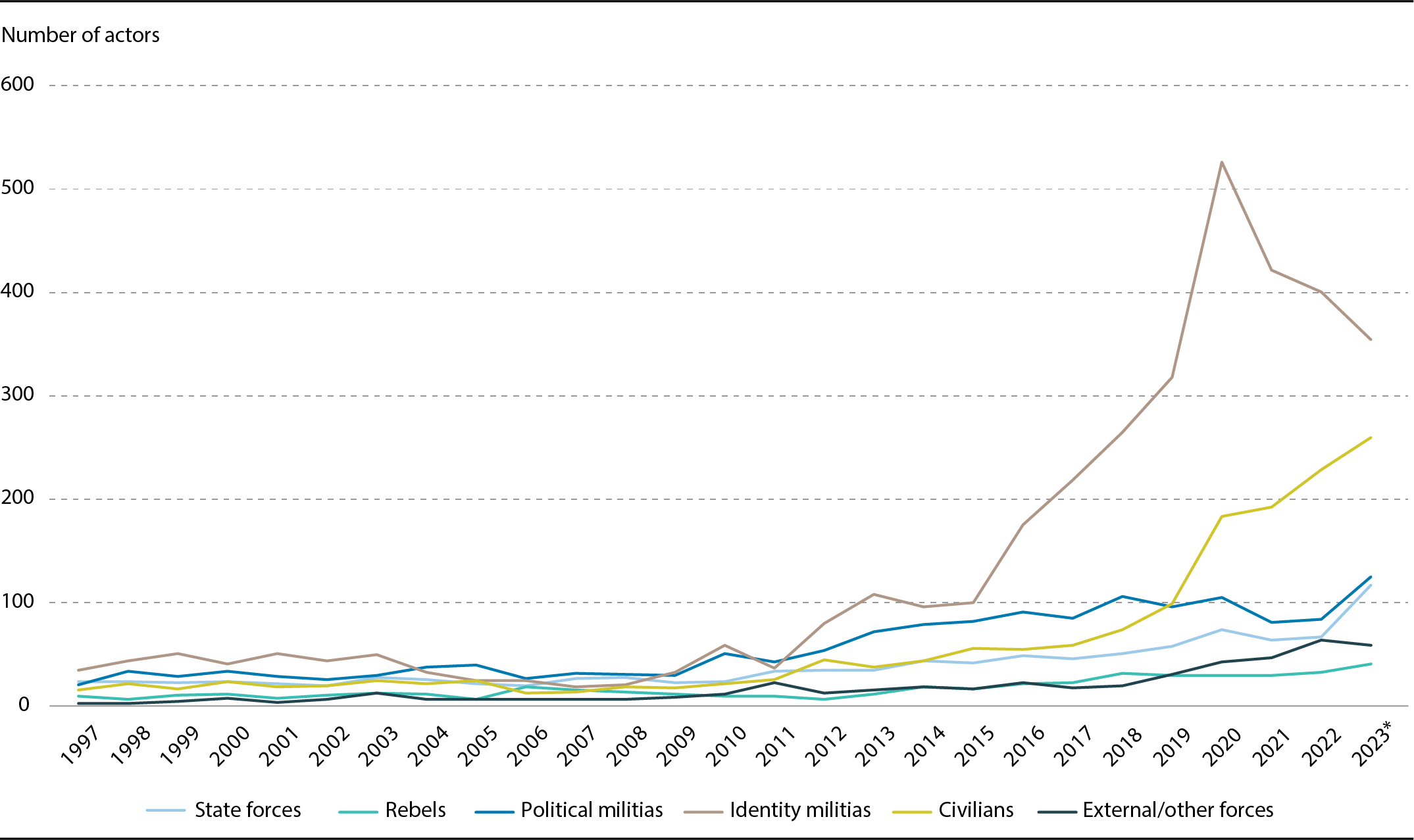

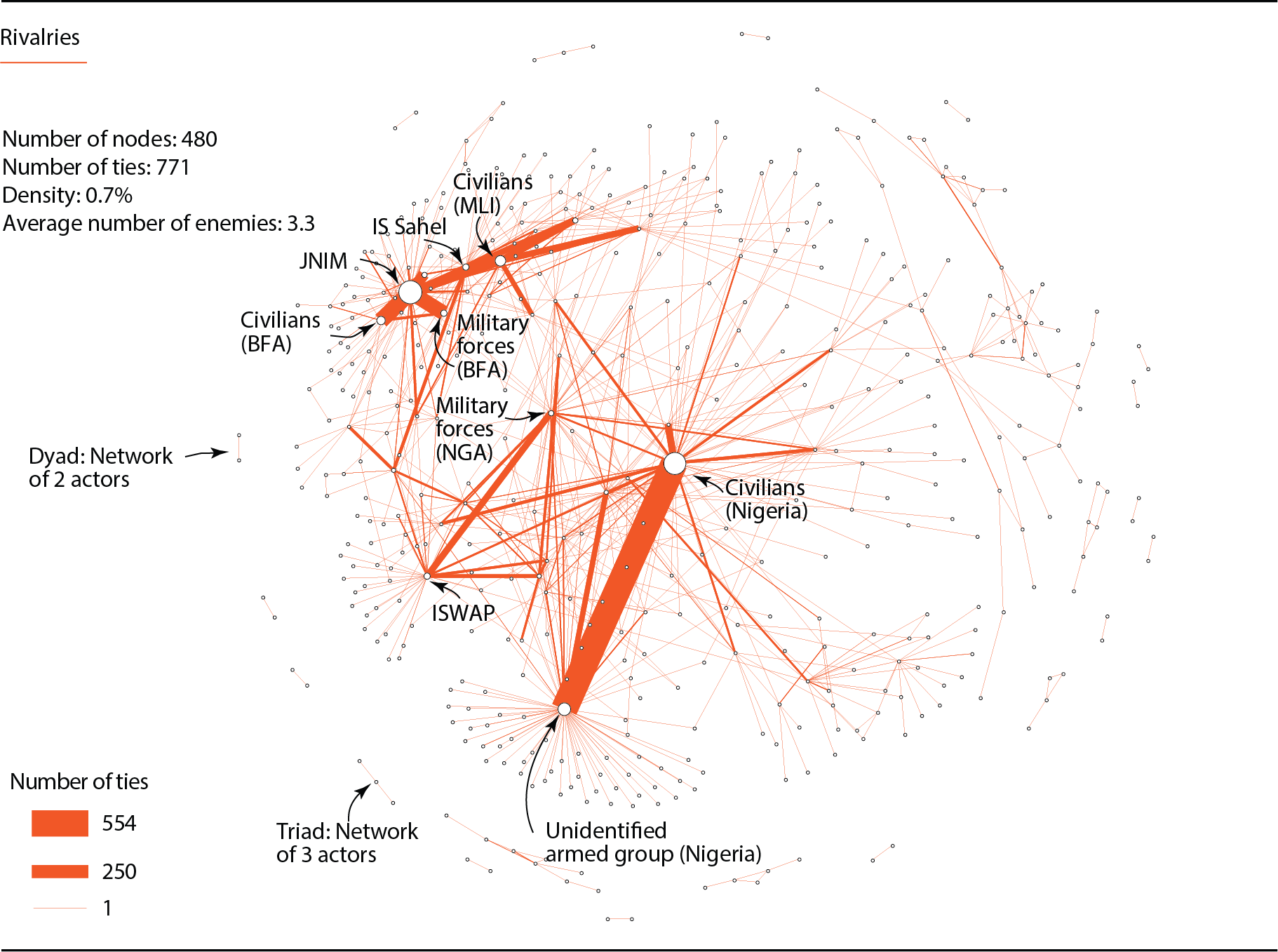
1. Growing number of actors in conflict
The number of actors in conflict is at an all-time high with nearly 500 armed groups active in 2023. The most common groups are identity-based militias.
2. Rivalries dominate
Relationships between actors take the form of rivalries and alliances. Rivalries refer to conflictual relationships; alliances refer to co-operative ones. Rivalries dominate the scene and are denser and span across state borders. This has catastrophic consequences for the stability of the region and the security of civilians.
3. Polarisation around a few powerful actors
The conflict network is centred around a few exceptionally violent actors, particularly in the Central Sahel. This reflects the fact that the region has become one large theatre of conflict in which violence is no longer isolated but part of a wider conflict environment. Rivalries between actors are representing by the lines linking the circles. The thickness of the lines indicates the number of violent events between two actors. We observe highly prominent actors such as the various transnational jihadist groups.
To know more
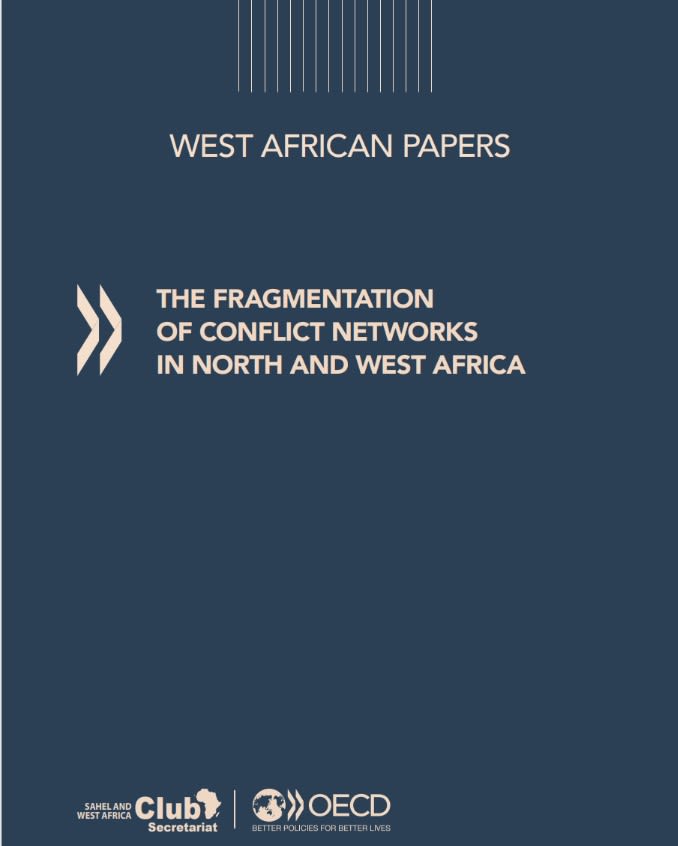
Working paper, "The fragmentation of conflict networks in North and West Africa"
The aim of this paper is to update the pioneering work on conflict networks carried out by the OECD Sahel and West Africa Club (SWAC), using a formal approach to networks known as dynamic social network analysis.

Working paper, "Identifying local conflict trends in North and West Africa"
In 2019, SWAC created an interactive, spatial tool for policy makers called the Spatial Conflict Dynamics indicator (SCDi). The SCDi monitors political violence at the sub-national level. Read more about the latest updates to the SCDi in this paper.
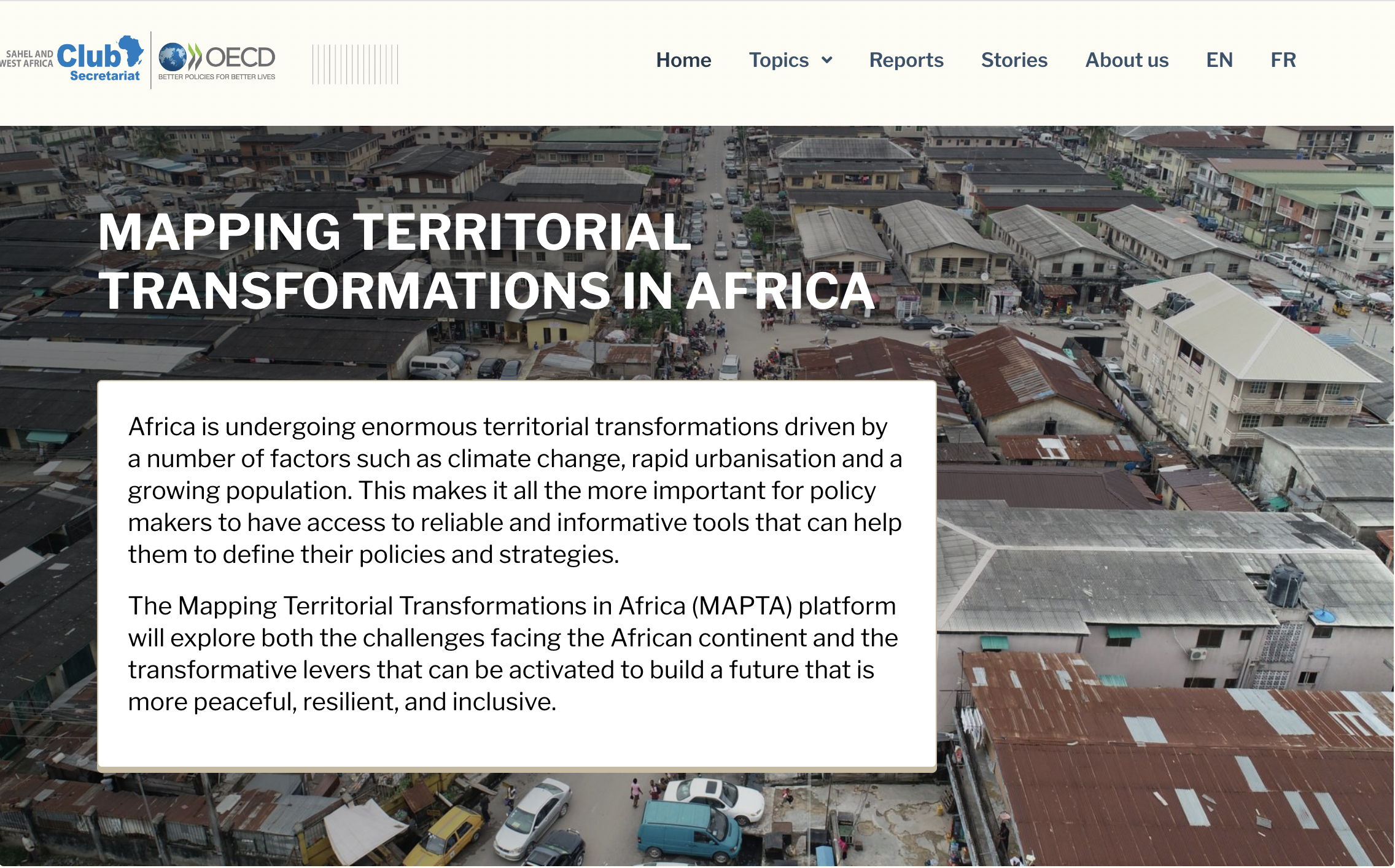
MAPTA
MAPTA is a unique interactive platform that identifies the territorial transformations facing the region, focusing on several themes: security, climate and gender.
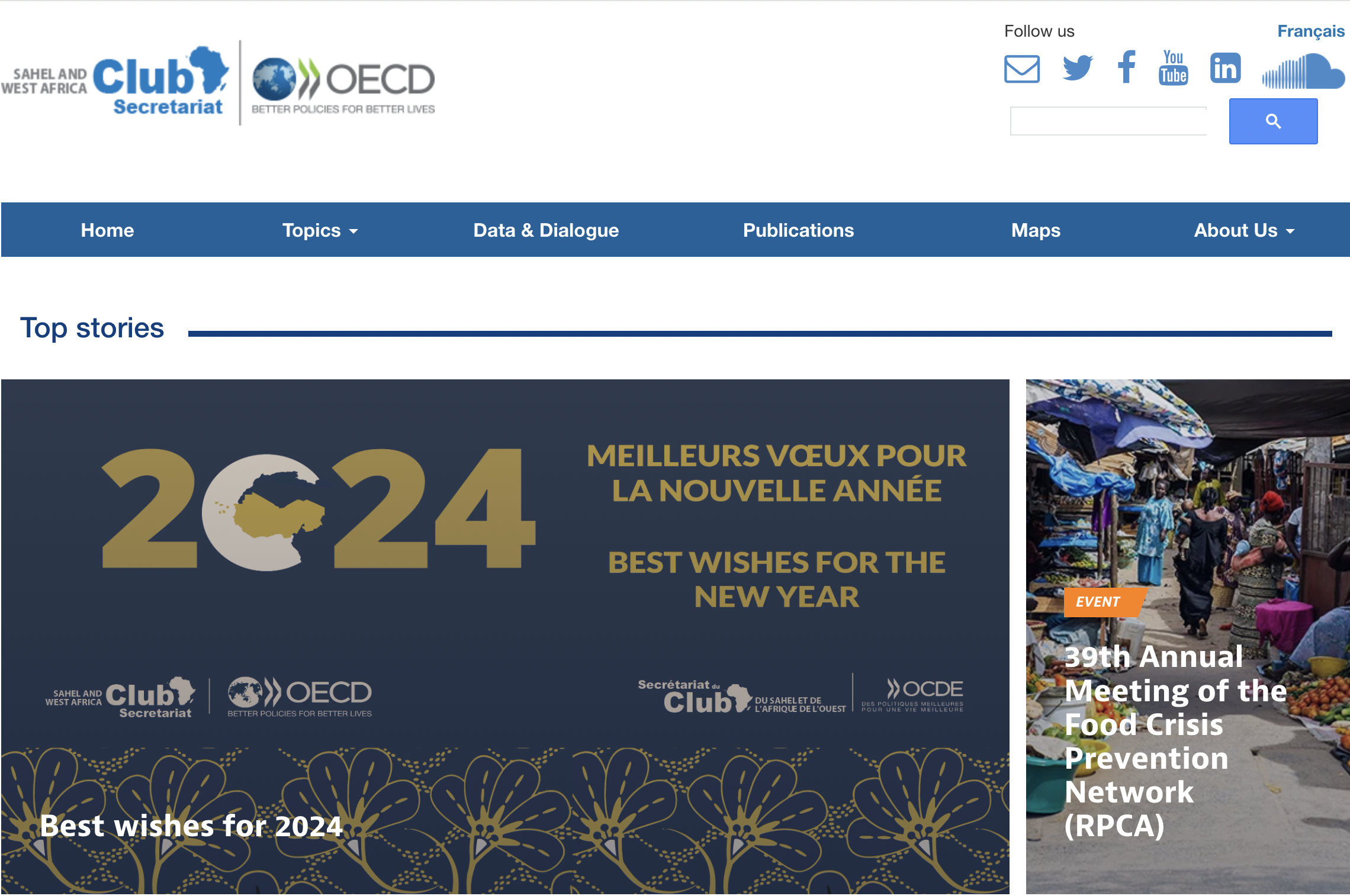
SWAC website
Explore our website to learn more about the complexities of food security, food systems and urbanisation in the Sahel and West Africa. Discover a wealth of resources designed to shed light on the challenges facing the region.

